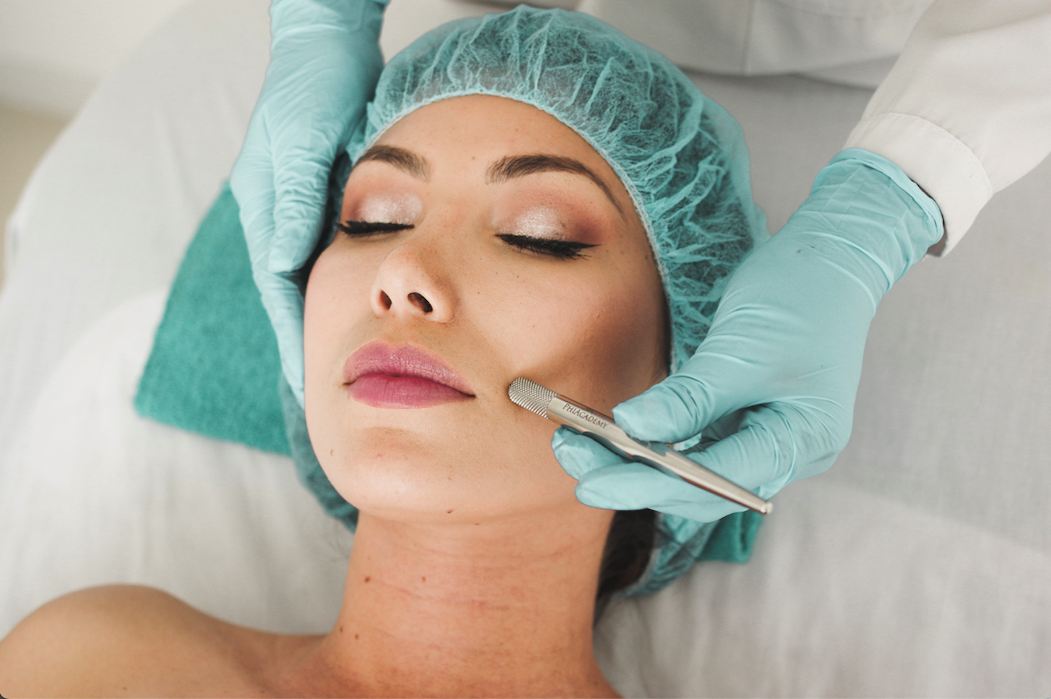In our daily lives, unexpected situations can arise for Dermatologists, and when it comes to dermatological emergencies, being well-informed can make a crucial difference. Dermatological emergencies encompass a range of conditions that require immediate attention and understanding. From severe allergic reactions to acute infections and burns, knowing how to respond is vital.
1. Introduction:
Dermatological emergencies involve sudden and severe skin-related issues that demand prompt action. Recognizing these situations and responding appropriately can prevent complications and promote better outcomes. Dermatologists play a pivotal role in addressing these emergencies, providing expert care and guidance.
2. Common Dermatological Emergencies:
Identifying Severe Allergic Reactions:
Allergic reactions can escalate quickly, leading to life-threatening situations. Understanding the signs, such as difficulty breathing or swelling, is crucial. Immediate administration of epinephrine and seeking emergency medical attention is vital.
Recognizing and Responding to Acute Infections:
Infections, when left untreated, can become serious. Recognizing the early signs, practicing proper wound care, and seeking medical help promptly can prevent complications.
Understanding the Urgency of Severe Burns:
Burn injuries, especially severe ones, require immediate attention. Initiating first aid measures like cooling the burn with running water and seeking medical assistance promptly are critical steps.
3. First Aid for Dermatological Emergencies:
Immediate Steps for Allergic Reactions:
If someone is experiencing a severe allergic reaction, administer epinephrine if available. Call emergency services and monitor the person's breathing and consciousness. Remember, quick action is key.
Proper Wound Care for Infections:
Cleaning wounds promptly and applying antiseptic can help prevent infections. Seek professional medical advice if signs of infection persist or worsen.
Initial Actions for Burn Victims:
For burn injuries, cool the affected area with running water for at least 10 minutes. Cover the burn with a clean, non-stick bandage, and seek medical attention for further assessment.
4. Consultation with Dermatologists:
Understanding the importance of seeking professional help during dermatological emergencies is paramount. Dermatologists can provide accurate diagnoses, tailored treatments, and guidance on long-term skin health.
5. Prevention Strategies:
Tips for Avoiding Allergic Reactions:
Identifying and avoiding triggers is essential for those prone to allergies. Carry necessary medications, and inform others about your condition.
Maintaining Skin Health to Prevent Infections:
Regular hygiene practices, moisturizing, and avoiding prolonged exposure to damp environments can reduce the risk of skin infections.
Preventive Measures for Burn Injuries:
Implement safety measures to prevent burns, such as using caution with hot objects, installing smoke detectors, and having a fire escape plan.
6. Case Studies:
Real-life case studies illustrate the importance of swift and appropriate action during dermatological emergencies. Examining these scenarios provides valuable insights into different situations and their outcomes.
7. The Role of Telemedicine:
Exploring Virtual Consultations for Emergencies:
Telemedicine can offer quick assessments during emergencies, enabling dermatologists to guide patients through initial steps.
Pros and Cons of Telemedicine in Dermatology Emergencies:
While telemedicine provides convenience, some emergencies may still require in-person evaluations. Understanding the limitations ensures appropriate use.
8. Common Misconceptions:
Addressing Myths Surrounding Dermatological Emergencies:
Dispelling misconceptions about the severity of certain conditions promotes better awareness and informed decision-making during emergencies.
Clarifying Misconceptions About First Aid:
Understanding what constitutes effective first aid versus common myths ensures the right actions are taken in emergencies.
9. Emerging Technologies in Dermatology:
Technological Advancements Aiding Emergency Responses:
Innovations like telemonitoring and diagnostic apps enhance the efficiency of emergency responses.
Future Trends in Dermatological Emergency Care:
Predicting future advancements allows for better preparedness in handling dermatological emergencies.
10. Holistic Approaches to Skin Health:
Importance of Overall Well-being in Preventing Emergencies:
A holistic approach to health, including a balanced diet and stress management, contributes to better skin health.
Integrating Holistic Practices for Healthier Skin:
Combining traditional dermatological care with holistic practices provides a comprehensive approach to skin health.
11. Dermatological Emergency Kit:
Essentials for a Home Emergency Kit:
Including items like antiseptics, bandages, and emergency contact information ensures readiness for unforeseen situations.
Tips for Assembling and Maintaining the Kit:
Regularly check and update the emergency kit to ensure all supplies are in good condition and within their expiration dates.
12. Educating the Public:
Raising Awareness About Dermatological Emergencies:
Community education programs create awareness, empowering individuals to respond effectively to emergencies.
Conclusion
Dermatologists play a crucial role in guiding individuals through these emergencies, providing expert care, and ensuring the best possible outcomes. In conclusion, understanding dermatological emergencies is paramount for everyone. Whether it's recognizing severe allergic reactions, responding to acute infections, or knowing how to address burn injuries, swift and appropriate action can be lifesaving.






Comments